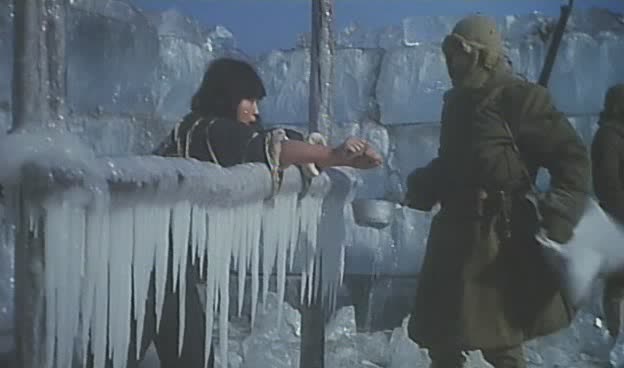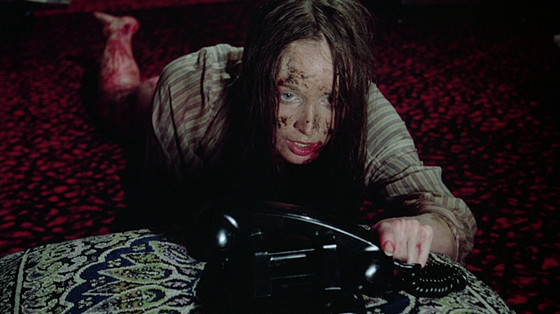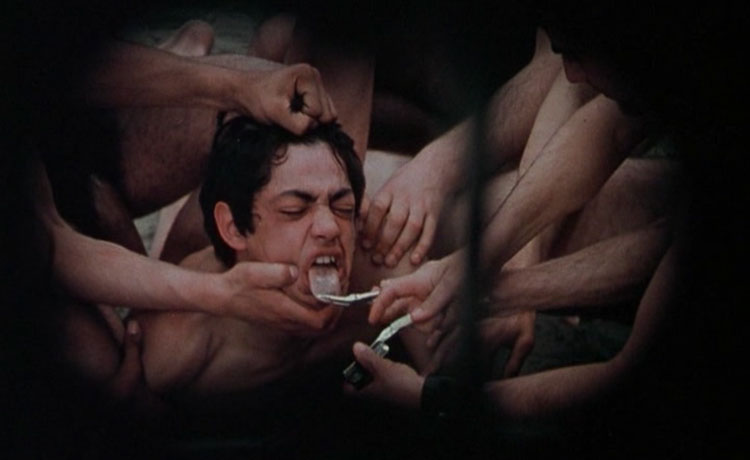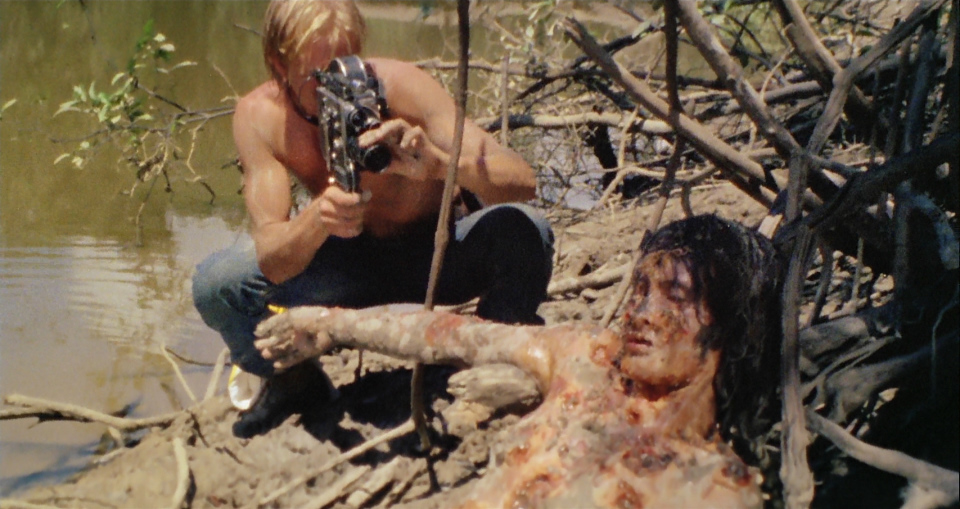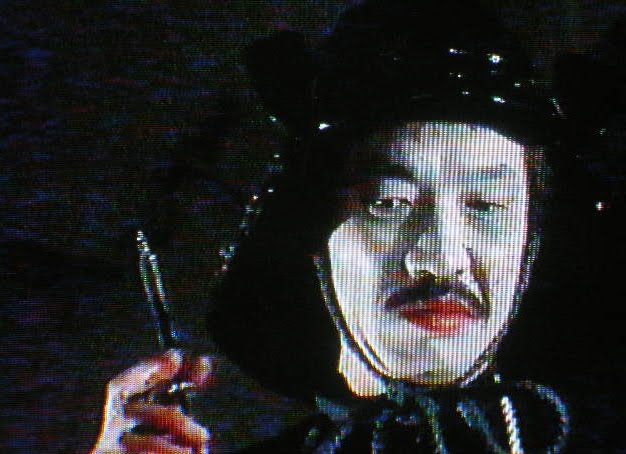7. Men Behind the Sun (1988)
Directed by Chinese filmmaker T.F. Mou, Men Behind the Sun is a horrific tale set during the events of World War II. The plot concerns a group of Japanese troops who capture Russian and Chinese prisoners of war, taking them to a secret outpost known as Squadron 731. Here, the prisoners are forced through torturous experiments, designed to help isolate a strain of bubonic plague for biological warfare.
Early on in the film, three Japanese boys are conscripted into the Youth Corps. They are brought to a facility serving Squadron 731, where they witness countless human atrocities. Disgusted, the boys revolt and stage an uprising.
As the war goes on, the Japanese become increasingly desperate. Enormous pressure is placed upon Squadron 731 to complete their work, and to keep all activity classified in the process. Eventually, the Unit are forced to retreat, and all evidence of their research is destroyed.
Men Behind the Sun is absolutely gut-wrenching, primarily because the plotline feels so plausible. Indeed, many of the torture scenes highlight the immoral and sadistic nature of war. With scenes of violent butchery, torture via freezing, and men being hunted down like animals, the film easily earns itself spot #7 on our list.
6. I Spit on Your Grave (1978)
Also known as “Day of the Woman,” this film is a revenge story in the same vein as The Last House on the Left. The female lead, Jennifer (Camille Keaton) is an aspiring writer. Looking for a quiet place to start her novel, she rents a riverside cabin in upstate New York. While searching for inspiration out the woods, she is attacked and brutally gang raped by a group of three degenerates, as well as a shocked tagalong. Jennifer is beaten, stabbed, violated and left to die, while her work is laughed at and torn to shreds.
After fleeing the scene, her attackers worry that she may have survived. They send the tagalong, Matthew (Richard Pace) back to finish her off. Matthew complies, but later succumbs to guilt and finds himself unable to complete the deed. He returns to his three companions, falsely claiming that their victim has been disposed of. Slowly, with time, Jennifer recovers. She resolves to enact a horrible vengeance against those who violated her. Bloodshed, torture and depravity ensue.
Branded as a “video nasty” in the United Kingdom, I Spit on Your Grave was banned for decades. Numerous violent scenes have attracted notoriety. One sequence has Jennifer performing fellatio on an attacker, only to leave him emasculated and bleeding to death. For all of its relentless cruelty and bloodlust, I Spit on Your Grave takes spot #6 on our list.
5. Salò (1975)
Also called “The 120 Days of Sodom,” Salò is an Italian art film that focuses on four corrupt, fascist libertines. Following the fall of Mussolini during WWII, the libertines begin kidnapping teenage boys and girls. The victims are taken to a palace near Salò, where they are subject to gruesome violence, torture, and sexual abuse.
The captives are made to eat human excrement, perform sex acts on command, and remain leashed at the throat, thus forcing them to crawl around on all fours like animals. As the alternate title suggests, the sodomy goes on for a staggering 120 days. By the end of the ordeal, viewers are treated to a shot of two young soldiers dancing and skipping a waltz, both of whom participated in the palace atrocities.
With depictions of children being mutilated and sodomized, Salò has rightly earned its title as one of the most disturbing pictures of all time. Unlike other films on this list that seek to merely shock or titillate, Salò is quite intelligent. Themes of power, corruption, fascism, and sexual perversion are explored in a way culturally relevant to film’s setting. The picture has been praised by historians and critics as a deeply artistic venture into the hearts and minds of evil men.
4. Cannibal Holocaust (1980)
An Italian horror film directed by Ruggero Deodato, few pictures have met with as much controversy as Cannibal Holocaust. The story sees Prof. Harold Monroe (Robert Kerman), a New York anthropologist, travelling to the jungles of South America. There, he looks to solve the mystery behind the disappearance of a film crew who had been working on a documentary about primitive cannibal tribes.
Venturing deep into the rainforest, he learns that the filmmakers caused great unrest among the Ya̧nomamö tribe. Eventually, it’s revealed that the crew were killed and eaten. Only one “artifact” remains—their reel of film. Outraged, Monroe leaves with the reel and heads back to New York. He examines the raw footage and discovers that many of the supposed “cannibal massacres” were staged.
Furthermore, he finds that the natives were treated horribly—one woman from the tribe was graphically raped and killed by the crew. In retaliation, the cannibals attacked, and thus the filmmakers met their bloody end.
Cannibal Holocaust is a powerful film, rich in themes of morality, culture, and indigenous relations. Scenes of graphic torture and dismemberment are treated intelligently, because they force the viewer to look at the underlying causation. With sequences of horrific animal cruelty sure to turn a few stomachs, Cannibal Holocaust earns itself spot #4 on our list.
3. Guinea Pig: Flower of Flesh and Blood (1985)
Based on the stories of Japanese manga, this straight-to-video horror film provides a brief glimpse into the life a psychopath. The plot is naively simple and the duration quite short, clocking in at a mere 42 minute runtime. A young woman (Kirara Yûgao) is walking home late at night when she is attacked by a mysterious assailant. The attacker (Hiroshi Tamura) drugs his victim with chloroform and takes her back to his dark and gory dungeon. Dressed as a samurai, he ties her down and slowly dismembers her. For the killer’s viewing pleasure, every last detail of the woman’s torment is captured on tape.
There’s not much to say about Guinea Pig aside from the fact that the torture is gratuitous, as well as painfully slow and drawn out. The lack of a prominent backstory has a deep psychological impact on the viewer. The victim is a random, unnamed woman, and the entire picture focuses on her abduction, mutilation, and eventual demise.
The point is driven home that attacks such as these can happen to anyone. Psychopaths exist, yet many are able to blend in with society, hiding beneath an array of seemingly friendly “mask personas.” At the end of the day, it’s the gritty, realistic atmosphere of Guinea Pig that allows the series to transcend being “just another torture porno.”
2. August Underground’s Mordum (2003)
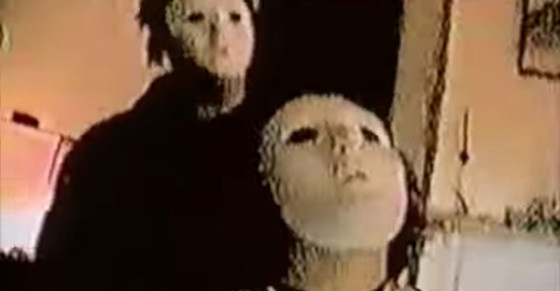
Arguably the filthiest and most reprehensible film on this list, Fred Vogel’s snuff series is as real as it gets. One could easily mistake the second installment in this exploitation trilogy for a genuine piece of criminal footage. From start to finish, Mordum is dark, dingy, perverse, and unrelentingly violent and sadistic. The plot is virtually non-existent, yet this ends up working in the film’s favor. The chaos that transpires is made believable by the completely ad-libbed, seemingly random nature of most scenes.
The story follows a group of psychopaths who get off on acts of mutilation, rape, torture and dismemberment. The action kicks off with Peter (Fred Vogel) walking in on his girlfriend, Crusty (Cristie Whiles) having incestuous sex with her brother, “Maggot” (Michael Todd Schneider). From there, the three go to a crack den and set out on a killing spree that lasts for the remainder of the picture.
To simulate a true “home movie” experience, shots of unrelated events are interspersed with the carnage, including, for example, footage from a concert. This adds to the feeling of criminal authenticity, and makes the picture very difficult to watch. Noteworthy scenes include forced emasculation, violation with the use of severed appendages, and even the cannibalism of a headless, maggot-covered toddler. With all of the above considered, August Underground’s Mordum takes spot #2 on our list.
1. Threads (1984)
This British docudrama explores the events of a theoretical nuclear holocaust. The story involves an international conflict between the United States and the Soviet Union during the mid-1980s. The Soviets march into Iran, promptly converting the territory into a satellite state—an act of war condemned by the U.S. and U.K. Around the world, military activity begins to mount.
Due to an unplanned pregnancy, two Sheffield residents, Ruth Beckett (Karen Meagher) and Jimmy Kemp (Reece Dinsdale) decide to marry. The two go on with their day-to-day lives, paying little attention to the military takeover of Iran. Eventually, the Soviets attack Britain, launching ICMBs (Intercontinental Ballistic Missiles) into Sheffield. The aftermath sees a shattered and terrified populace desperate to survive by any means. Clean food, running water, electricity and public order are lost to the ensuing chaos.
What makes Threads so much more disturbing than other films on this list is the unadulterated depiction of malice and corruption on a worldwide scale. The events that spell doom are all eerily plausible. Indeed, the plotline can be thought of as a projection of sorts, where a post-apocalyptic future of nuclear war, poverty, and suffering is fully realized. With scenes depicting the graphic effects of starvation, disease, and death by radiation sickness, Threads easily takes the cake for spot #1 on our list.
Conclusion
In conclusion, the contributions to disturbing cinema over the years have been many. Some films offer intelligent statements on politics, science, religion or culture. Others provide a glimpse into the minds of psychopaths, whose depraved thoughts are translated into stomach-churning actions onscreen.
However they go about it, today’s cinematographers haven’t forgotten how to push the envelope. Directors such as Fred Vogel and Srdjan Spasojevic are unafraid to challenge viewers in regards to what constitutes “cinematic art.” If the works of these young exploitation filmmakers are any indication, then it would appear we’re in for some very exciting times.
Author Bio: Tom Blicq is a fourth year student at the University of Winnipeg. He is completing a BSc in Biology, with a minor in English literature and creative writing. When not writing horror stories, poetry or articles, he enjoys watching films by directors like John Carpenter, Wes Craven, David Lynch, and David Cronenberg.
